Locked in ‘the cage.’ Report finds disturbing discipline measures at Seattle school
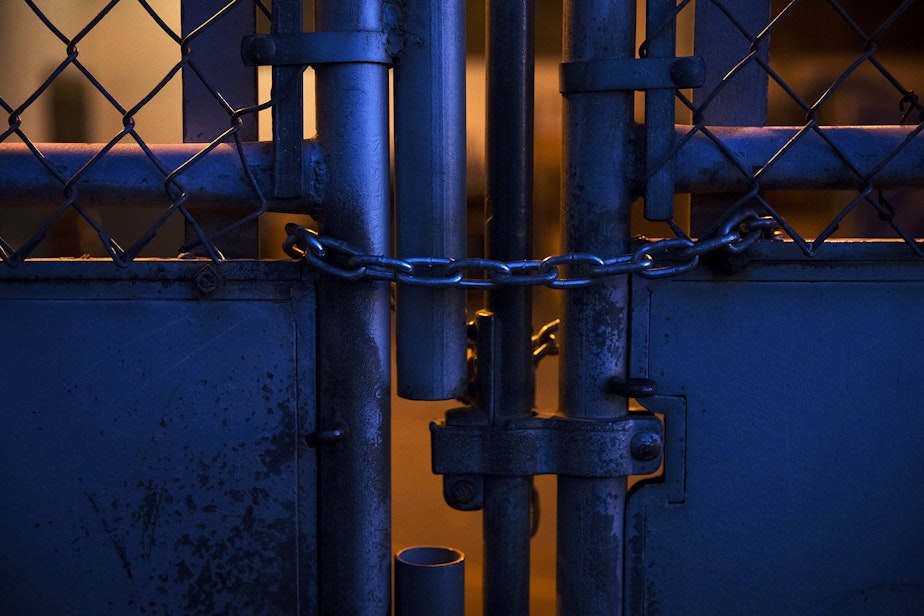
Investigators found that the principal of View Ridge Elementary School in northeast Seattle told staff to lock the gates around a second-grade boy to manage his behavior issues.
District leaders called the situation “egregious.” But the district had approved of this space as suitable for the child.
A
s Jacquelyn Flaherty, a kindergarten teacher, walked down the hall at View Ridge Elementary in June 2019, she saw something through the window that startled her: Jaleel, a young student she knew well, was outdoors, barefoot, in a fenced play court. Surrounding him, she said, were four or five staff members, including principal Ed Roos and a school custodian.
“The custodian had his keys in his hands,” Flaherty said, leading her to wonder, “They’re locking this child up in here?”
Jaleel’s eyes were wide and frightened, she told KUOW.
She hurried outside.
Sponsored
“I put my hand up. I said to them: ‘Stop! This makes me uncomfortable.’ And I told the baby, ‘Come here, come here,’ and I backed him out of there.”
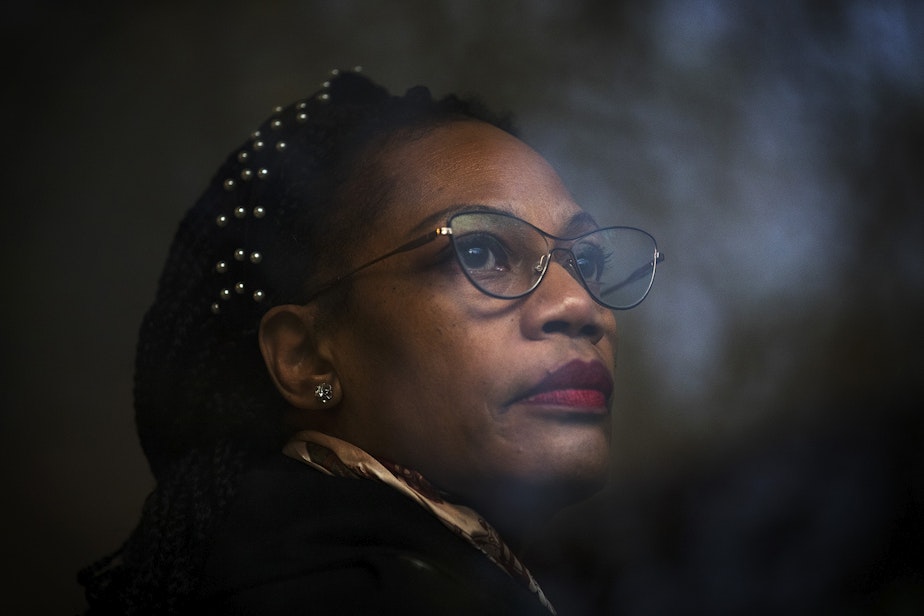
A Seattle Schools investigation would later reveal that Jaleel had been placed in this enclosure, dubbed “the cage” by school staff members, on multiple occasions, including June 20, 2019, the day Flaherty intervened.
Sometimes, staff told the investigator, the child was kept there all day. Staff told KUOW that a major reason was Jaleel's tendency to leave the school building.
Many school staff members were aware of the situation. The assistant principal brought the 8 year old his lunch, which Jaleel ate while sitting on the concrete floor. Students and teachers walked by him on their way to recess, and the students sometimes stopped to stare at Jaleel.
Sponsored
Seattle Public Schools sent KUOW a statement condemning what happened.
“The incidents that occurred at View Ridge are egregious and wrong,” the district said in a written statement. “This type of treatment of children is unacceptable.”
But district officials were aware that Jaleel was being placed in this enclosure — a district staffer from the special education department had even suggested the outdoor space for the boy, Principal Roos and another staff member told KUOW.
The situation raises questions about the district’s isolation guidelines and practices — and why a fenced outdoor space would be considered appropriate for a child as his peers looked on.
On the day that Flaherty intervened, in June, she then took Jaleel to her kindergarten classroom to work on a pillow-sewing project with the rest of the class. Jaleel is identified here by his middle name to protect his identity. Flaherty knew how creative he was, and how much Jaleel loved to work with his hands.
Sponsored
“I wanted him to think of something else other than being locked in that area,” Flaherty said.
Within minutes, Flaherty said, Jaleel was leaning over a sewing machine as she showed him how to guide the fabric in a slow, straight line. Flaherty tried not to show him how shaken she was.
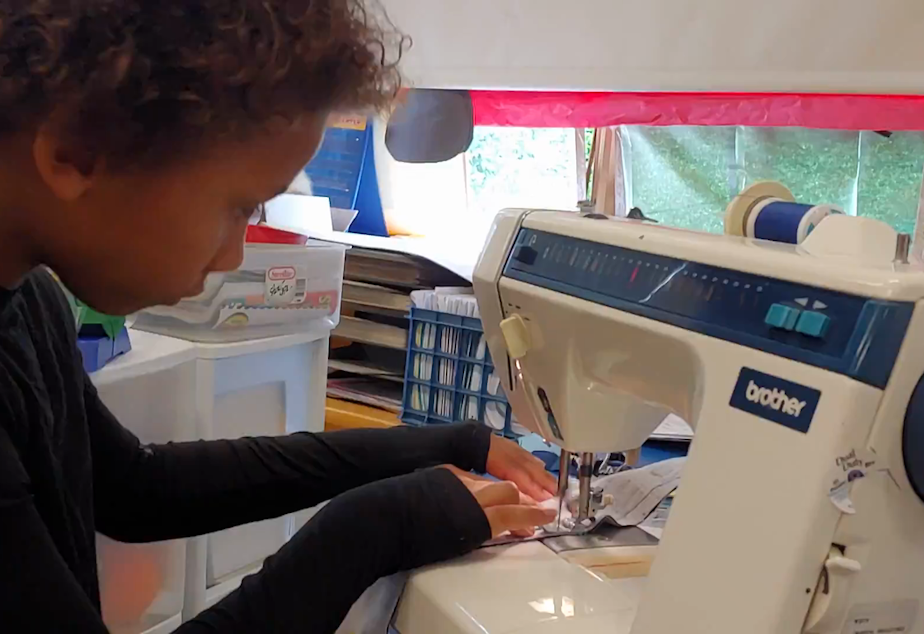
 9 secs
Jaleel, who was 8 years old at the time this video was taken, sews a pillow in Jacquelyn Flaherty's kindergarten class at View Ridge Elementary School on June 20, 2019. Flaherty took this video on the day that she saw Jaleel in an enclosure outside, without shoes or socks on.
9 secs
Jaleel, who was 8 years old at the time this video was taken, sews a pillow in Jacquelyn Flaherty's kindergarten class at View Ridge Elementary School on June 20, 2019. Flaherty took this video on the day that she saw Jaleel in an enclosure outside, without shoes or socks on.
“I have never seen, in all these years, a child being locked into an area like that,” Flaherty said. “It was like a cage.”
The sight was especially disturbing to Flaherty because Jaleel was one of the few Black students at the affluent, mostly-white school. She said she is the only Black teacher.
Sponsored
Flaherty had gotten to know Jaleel’s family because his younger sister was in her class.
Jaleel was usually sweet and gentle, she said, but he’d been through a lot in life, including domestic violence. He received special education services, struggled with post-traumatic stress disorder, and could get overwhelmed and act out — running around the school, threatening people, throwing things, and often trying to leave the building and walk home, staff said.
Still, Flaherty said, it didn’t take much to calm Jaleel — she had done it herself. Dancing to children’s music, or taking a walk, was often what it took.
The experience of being locked in the play court would leave Jaleel shaken for a long time to come. His mother, Janelle Williams, also identified by her middle name to protect her privacy, said that the situation speaks to how Black children — and families — are treated in schools.
Sponsored
“I don’t care how upset I get at my baby. I’m not gonna go and lock him in the damn closet,” Williams said.
As an African-American woman, she said, “If I was to lock my son up in a closet, they’d be quick to call CPS on me. So why is it that y’all can lock my son up?”
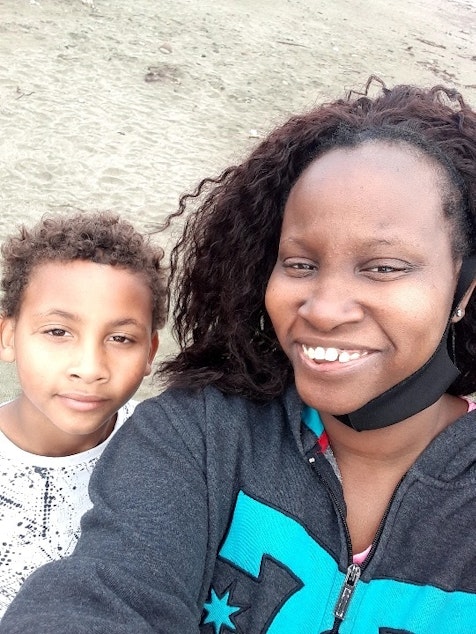
S
eattle Public Schools launched an investigation after Flaherty filed an August 2019 discrimination complaint against Principal Roos — in which she reported how Roos had kept Jaleel outside.
The investigation, completed in October 2020, found that Roos violated district policy in Jaleel’s case by failing to record and report the isolation incidents. The investigation also found that Roos had not followed district guidance that at least one door must remain unlocked.
The investigation was inconclusive about how many times Jaleel was put in the fenced area, but staff — including Roos — said that it happened numerous times in spring 2019.
Roos described it to the investigator as “an excellent place for him ... a calming area.” Roos said that Jaleel would cuss at staff members, but that this was “a safe place for him to use inappropriate language.”
Sponsored
Roos denied that the area was fully locked, and told the investigator that Jaleel was put there for just 20 to 30 minutes at a time.
Roos’s staff told the investigator otherwise. Dorr Anderson, an instructional assistant, said he had spent at least two full school days in the fenced-off area with Jaleel.
Although the child was sometimes kept in the space against his will, Anderson also said that Jaleel had expressed it was his preferred area because he “realized that if he got to spend all day in there, he didn't have to do schoolwork. He got to play with balls, and got to spend time with a preferred adult.”
Kristen Eckert, the assistant principal, told the investigator that she brought the 8 year old his lunch on a tray on multiple days. Jaleel ate it on the ground; there were no chairs or tables in the play court.
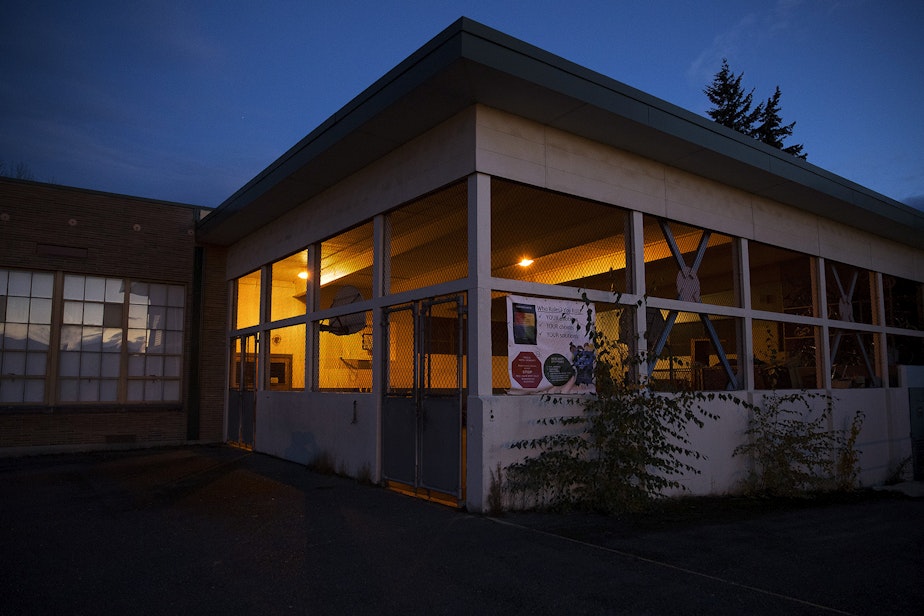
Eckert told the investigator that she and Roos had asked for help from multiple departments within the district regarding Jaleel, but received no assistance. Jaleel’s behavior had escalated to the point where he once climbed into a storage area and threw broken glass at her, and at a custodian, Eckert told the investigator.
Eckert told the investigator that Roos placed Jaleel in the play court with the doors locked because he was concerned about Jaleel getting hurt, and wanted him in a safer environment. She said there was always an adult staff member with a walkie-talkie with Jaleel.
Aaron Larson, one of the school custodians at the time, told the investigator that Roos directed him to chain and padlock the gates once Jaleel was inside. Larson said he was very uncomfortable following those orders but didn’t know how to object.
“The idea of trapping a child in that kind of environment just screams all the wrong signs,” Larson told KUOW in an interview.
Roos had, in fact, received district approval to put Jaleel in the fenced room — and, he told KUOW, a district official had come up with the original idea of using the play court for Jaleel, because, unlike many schools, View Ridge has no student isolation rooms. In an email, Anderson, the instruction assistant, confirmed that account.
“The use of the play court as a safe space for students to deescalate was suggested and approved by district Special Education officials,” Roos told KUOW in a written statement.
The discipline department also approved, he said. Erin Romanuk, who oversees discipline for Seattle Public Schools, confirmed to a district investigator that Roos had asked her whether it was a permissible area to place Jaleel.
“Romanuk stated that she told Roos he could use it if the doors were unlocked and [Jaleel] was supervised at all times,” the investigator wrote.
Asked whether Roos followed the district’s isolation protocols, Romanuk told the investigator “Going by the definition of the procedure for [isolation] I would say, yes, he followed it.”
Although Romanuk did not agree to an interview for this story, in a written statement, district spokesperson Tim Robinson said that “Ms. Romanuk would never have recommended or endorsed that a young person be locked in an outdoor space.
“According to the policy, a school leader could use various spaces (outdoor spaces included) as a ‘break space’ or ‘cool down area’ for a young person, as long as the space was unlocked and the young person was supervised. Whether or not the approach Ed Roos used is allowable as outlined in the Superintendent Procedure, there was a severe lack of judgement.”
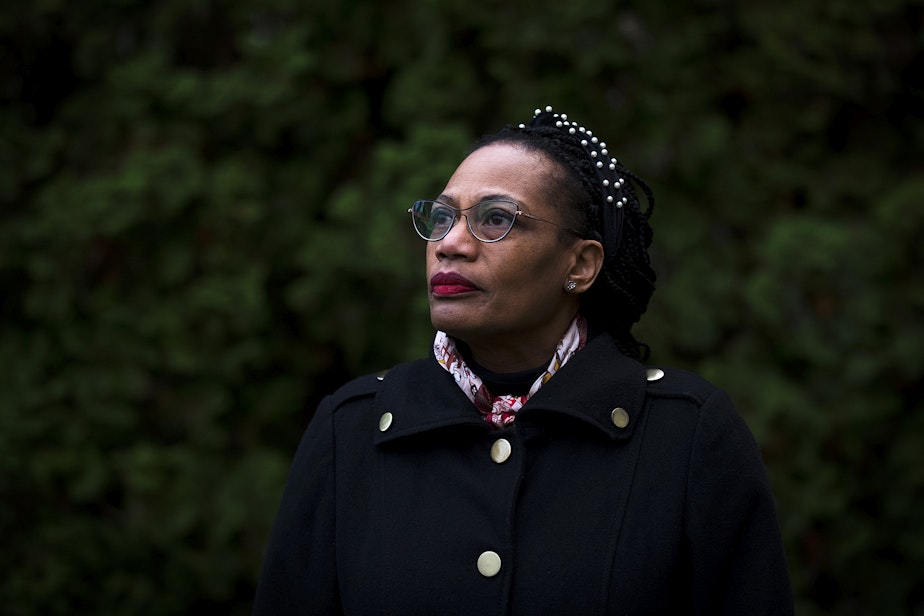
P
arents must be notified verbally and in writing when their children have been isolated or restrained. But Janelle Williams told KUOW that her son was the one who told her what had happened, at Flaherty’s urging.
The investigation found that no one at the school recorded any of Jaleel’s isolation incidents.
Jaleel told his mother that he was afraid when they locked him up, she said, and that he felt like he was trapped in a cage.
“I honestly started crying, because I was just like, ‘What in the world?’” Williams said in an interview. “I was thinking about how scared he was with no one to advocate for him. It’s heartbreaking.”
Williams confronted Roos about locking her son in the fenced play court.
“It was disregarded,” Williams said. “I’m made to feel like I’m not knowing what I’m talking about because I don’t have a degree.”
Jaleel has been through a lot in his young life, Williams said, and has been abused. She and her children are currently living in a domestic violence shelter after fleeing her ex, she said. What Jaleel endured at school compounded his trauma, Williams said.
Several teachers went to Roos to voice their concerns about confining Jaleel in the fenced area.
One told the investigator that she told Roos that it was wrong, and that it was painful to see Jaleel looking like a “caged animal.”
Another teacher told the investigator that she thought about how the boy felt “in a school where there are very few African-American students.”
“It also seemed to me that there was a correlation between jail and being in a cage,” she said.
Those teachers suggested to Roos using an unused portable classroom, and from then on, Jaleel was isolated in the portable instead of the fenced play court.
When the investigator asked Roos, who is white, whether it was discriminatory for a Black student “to be placed in a fenced-off area, where staff and students walking by can see him… eating food off a tray on a concrete floor,” Roos disagreed, the investigator wrote.
“We were dealing with behaviors and behavioral data we had collected,” Roos told the investigator. “This was not discrimination.”
Fourteen months after Flaherty filed her complaint with the district, an investigator determined that Roos had also violated district restraint policies in interactions with two other children. In separate incidents, the district found, Roos had restrained the children by wrapping his arms around their torsos while they both sat on the floor.
Restraining students on the floor is banned by policy and law.
Read: More stories from KUOW's ongoing series about abuse of students in schools
In a written statement, the district said “these incidents of bias and mistreatment of our students aren’t new – for many years, the district has heard the painful stories from families and students. What has changed is our district’s HR response and a superintendent and school board who are committed to accountability and taking swift action.”
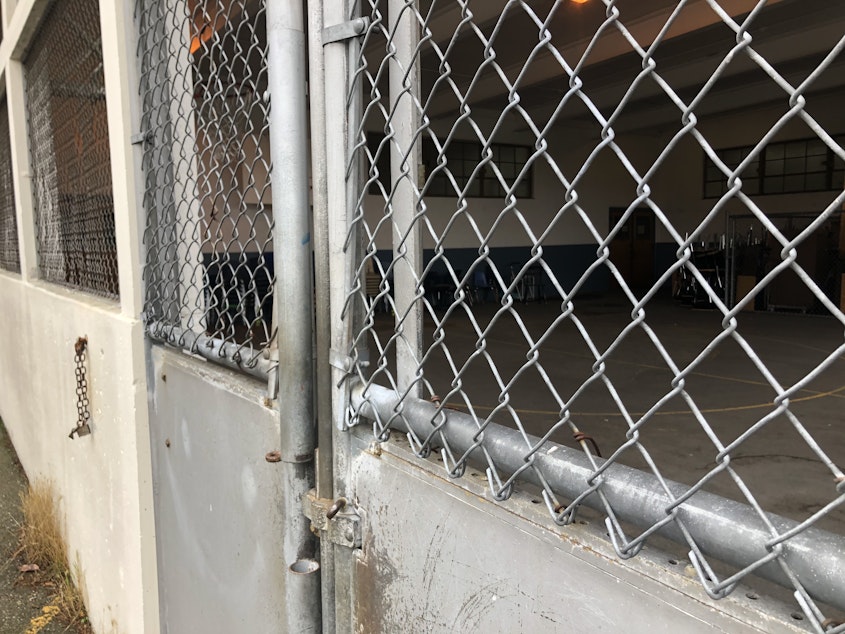
However, although Flaherty filed her complaint in August 2019, and Jaleel’s mother had also written to the district to complain about her son’s isolation outdoors, Roos remained on the job for more than a year, until this November.
Educators are typically placed on administrative leave during investigations of serious misconduct so their presence in the workplace does not influence the investigative process, and have a chilling effect on their colleagues’ testimony to investigators. The district did not take that step in Roos’s case.
“It was because it wasn’t clear until well into the investigation that the doors to the play court had been locked, and the child had been served lunch in the enclosed area,” said district spokesperson Tim Robinson.
Teacher Jackie Flaherty had also charged Roos with employment discrimination and retaliation related in part to her complaints about his treatment of Jaleel. The investigation did not find sufficient evidence to support those claims.
Three weeks ago, shortly after the district completed its investigation, Roos resigned as part of a settlement agreement with the district. At the time, the district had not yet made a decision about disciplinary action, said Robinson. In exchange for his resignation, Seattle Public Schools bought out the remainder of Roos’s contract at an estimated $96,000 according to state salary records.
“This is a huge failure in so many parts of the system,” Eliza Rankin, Seattle School Board member, told KUOW in an interview.
“That there was a policy that allowed anything like that to happen is a failure,” Rankin said.
“That we have people in our buildings who think it's okay to do that to kids is a failure. That so many people saw what was going on and felt like something was wrong and didn't know what to do is a failure,” Rankin said.
“It’s really fucked up.”
Rankin and fellow board member Brandon Hersey are working on a new districtwide isolation and restraint policy to reduce — if not eliminate — those methods of controlling children.
Isolation and restraint affect “almost exclusively students of color — namely Black students — and special education students, and especially our Black students who also receive special education services,” Hersey said.
Federal data show that Seattle Public Schools reported 729 incidents of restraint or isolation in the 2017-18 school year. Of those, 98 percent involved students who receive special education services. Black students are disproportionately represented in special education.
“We can provide a stellar, holistic educational experience without putting our hands on children,” Hersey said, “or putting them in enclosures that resemble cages.”
Jaleel’s mother, Janelle Williams, said that it is not enough for the principal to have resigned. She wants the district to look at everything that went wrong in her son’s case, including why so many staff members saw Jaleel locked up, but said, or did, nothing.
“He has nightmares about the cage incident,” Williams said. Her son’s treatment at View Ridge scarred him, Williams said, and contributed to his admittance to two psychiatric hospitals this month. That is where he is today, she said.
Jaleel is usually a “calm, cool and collected” child, Williams said. “He likes to help around the house, and help with the little ones. And anything with his hands he loves to do.
“I feel like he's going to be an architect, because he's very smart,” Williams said.
But when schools treat Black children like Jaleel was treated, Williams said, “You're showing them, ‘You're gonna be in jail before you even start.’”
Correction: 12/5/20 5:01 p.m.—An earlier version of this story misstated the date on the video caption.
Do you know about verbal, emotional, physical or sexual abuse of students in public or private schools? We’d like to hear your story. Contact reporter Ann Dornfeld at adornfeld@kuow.org or (206) 221-7082.




